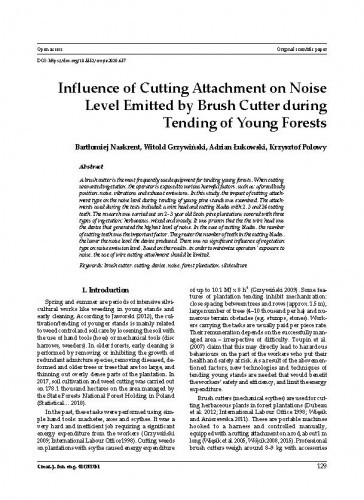A brush cutter is the most frequently used equipment for tending young forests. When cutting unwanted vegetation, the operator is exposed to various harmful factors, such as: a forced body position, noise, vibrations and exhaust emissions. In this study, the impact of cutting attachment type on the noise level during tending of young pine stands was examined. The attachments used during the tests included: a wire head and cutting blades with 2, 3 and 24 cutting teeth. The research was carried out on 2–3 year old Scots pine plantations covered with three types of vegetation: herbaceous, mixed and woody. It was proven that the the wire head was the device that generated the highest level of noise. In the case of cutting blades, the number of cutting teeth was the important factor. The greater the number of teeth in the cutting blades, the lower the noise level the device produced. There was no significant influence of vegetation type on noise emission level. Based on the results, in order to minimize operators’ exposure to noise, the use of wire cutting attachment should be limited.
Sažetak

 Croatian journal of forest engineering : 41,1 (2020) : journal for theory and application of forestry engineering / editor-in-chief, glavni urednik Tibor Pentek, Tomislav Poršinsky.
Croatian journal of forest engineering : 41,1 (2020) : journal for theory and application of forestry engineering / editor-in-chief, glavni urednik Tibor Pentek, Tomislav Poršinsky.